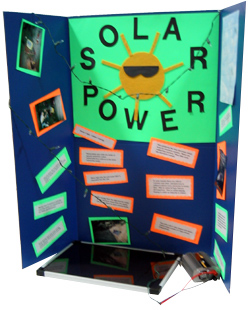Parents – Don't Fear the Science Fair
It’s that time of year again. Snow is melting, temperatures are starting to rise a bit and your child has to work on a science fair project.
The dreaded science fair project.
The goal of the science fair is to teach the scientific method and give students insight into how to theorize, set up, perform and draw conclusions from an experiment. But it’s so much more than just boring science steps. It gets kids excited about independent learning, reaching, researching and discovering. This isn’t something you read about in a text book, it’s something you create, build and find your own answers. Creativity also helps in building a science fair project board – they are works of art!
Students also learn public speaking skills during the fair when presenting their project and discussing it with fair visitors.
And through all of this hard work, speaking, creating, testing and concluding, the kids build self-confidence and pride in their work. My favorite part of the science fair is walking around and seeing the pride and joy on all of the kids’ faces. Now, how can that be dreaded?
A friend of mine told me that she fears the science fair so much, that she throws the signup sheet out quickly before her kids see it and get any ideas. I’ve heard from other parents that they would lov
e to have their kids participate, but have no good idea where to start.
What are we teaching our kids if we are so fearful of the science fair that we won’t give them a chance at it? Information is power and that is true for the science fair. By knowing a few simple steps, you can help guide your child through an amazing journey through science.
The science fair project is a series of steps to reach a conclusion –
- Ask a Question
The question doesn’t have to be something to make Newton scratch his chin. It can be anything that interests you. - Research
Gather information about the question you want to explore. Ask your science teacher and librarian for tips on how to find detailed information for your project. - Hypothesis – Take a Guess
Based on the research you have gathered, take an educated guess and write an “I think” statement. What do you think will happen? - Materials
What will you need to find the answer to your question? Determining your variables will tell you what materials you will need. A variable is what changes from one experiment to another. You will draw conclusions from experimenting with different variables. If you don’t have at least one variable, you don’t have a true science experiment. - Procedure – Conduct Your Experiment
This is the part where you perform your experiment and run your tests. - Observations and Conclusion
Provide a written description of what you discovered from your experiment. Was your hypothesis correct or incorrect? This is where you summarize the results of your experiment and compare the results to your original guess, and remember… it’s okay if your hypothesis was wrong. That is all part of the scientific process. - Data – Science Fair Board
Log and display your information on a science fair board. Most craft stores sell them or Google “science fair project board” to find one online. Organize your project board by the steps you followed – Question, Research, Hypothesis, Materials, Procedures, Data, Observations and Conclusion.
For science fair project ideas, additional help with your project and supplies, visit us at SteveSpanglerScience.com.
Guest Blogger Susan Wells is a mom of two girls, ages 5 and 9. She organizes the Science Fair at her daughter’s elementary school and loves to bring science into their lives in and outside of the classroom. Susan does social media, blogging, blogger outreach and web marketing for Steve Spangler Science.





Good Discussion
Wow, this article would let parents support their children in their science fair projects. Good post!